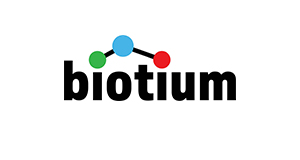CD3e(CRIS-7), 1mg/mL
CD3e(CRIS-7), 1mg/mL
Artikelnummer
BTMBNUM1050-50
Verpackungseinheit
50 µl
Hersteller
Biotium
Verfügbarkeit:
wird geladen...
Preis wird geladen...
Description: Recognizes the epsilon chain of CD3 (Workshop V; Code: CD03.09), which consists of five different polypeptide chains (designated as gamma, delta, epsilon, zeta, and eta) with MW ranging from 16-28 kDa. The CD3 complex is closely associated at the lymphocyte cell surface with the T cell antigen receptor (TCR). Reportedly, CD3 complex is involved in signal transduction to the T cell interior following antigen recognition. The CD3 antigen is first detectable in early thymocytes and probably represents one of the earliest signs of commitment to the T cell lineage. In cortical thymocytes, CD3 is predominantly intra-cytoplasmic. However, in medullary thymocytes, it appears on the T cell surface. CD3 antigen is a highly specific marker for T cells, and is present in majority of T cell neoplasms.Primary antibodies are available purified, or with a selection of fluorescent CF® Dyes and other labels. CF® Dyes offer exceptional brightness and photostability. Note: Conjugates of blue fluorescent dyes like CF®405S and CF®405M are not recommended for detecting low abundance targets, because blue dyes have lower fluorescence and can give higher non-specific background than other dye colors.
Product origin: Animal - Mus musculus (mouse)
Conjugate: Purified, BSA-free
Concentration: 1 mg/mL
Storage buffer: PBS, no BSA, no azide
Clone: CRIS-7
Immunogen: Stimulated human leukocytes
Antibody Reactivity: CD3e
References: Note: References for this clone sold by other suppliers may be listed for expected applications.
Entrez Gene ID: 916
Expected AB Applications: Functional studies (published for clone)
Z-Antibody Applications: Functional studies (published)/Flow, surface (verified)/IF (verified)
Verified AB Applications: Flow (surface) (verified)/IF (verified)
Antibody Application Notes: Higher concentration may be required for direct detection using primary antibody conjugates than for indirect detection with secondary antibody/Immunofluorescence: 1-2 ug/mL/Flow Cytometry 0.5-1 ug/million cells/0.1 mL/Induce T cell activation and proliferation/Optimal dilution for a specific application should be determined by user
Product origin: Animal - Mus musculus (mouse)
Conjugate: Purified, BSA-free
Concentration: 1 mg/mL
Storage buffer: PBS, no BSA, no azide
Clone: CRIS-7
Immunogen: Stimulated human leukocytes
Antibody Reactivity: CD3e
References: Note: References for this clone sold by other suppliers may be listed for expected applications.
- McMichael AJ et al. (eds) Leukocyte Typing III, Oxford University Press, Oxford, 1987
- Knapp W et al. (eds) Leukocyte Typing IV, p245 and 1059, Oxford University Press, Oxford, 1989.
- Schlossman S et al. (eds) Leukocyte Typing V. Oxford University Press, Oxford, 1995.
- J Immunol 1991, 146(4):108 (functional studies)
Entrez Gene ID: 916
Expected AB Applications: Functional studies (published for clone)
Z-Antibody Applications: Functional studies (published)/Flow, surface (verified)/IF (verified)
Verified AB Applications: Flow (surface) (verified)/IF (verified)
Antibody Application Notes: Higher concentration may be required for direct detection using primary antibody conjugates than for indirect detection with secondary antibody/Immunofluorescence: 1-2 ug/mL/Flow Cytometry 0.5-1 ug/million cells/0.1 mL/Induce T cell activation and proliferation/Optimal dilution for a specific application should be determined by user
| Artikelnummer | BTMBNUM1050-50 |
|---|---|
| Hersteller | Biotium |
| Hersteller Artikelnummer | BNUM1050-50 |
| Verpackungseinheit | 50 µl |
| Mengeneinheit | STK |
| Reaktivität | Human, Monkey (Primate) |
| Klonalität | Monoclonal |
| Methode | Immunofluorescence, Flow Cytometry, Functional Studies |
| Isotyp | IgG2a kappa |
| Wirt | Mouse |
| Konjugat | Unconjugated |
| Produktinformation (PDF) | Download |
| MSDS (PDF) | Download |

 English
English







